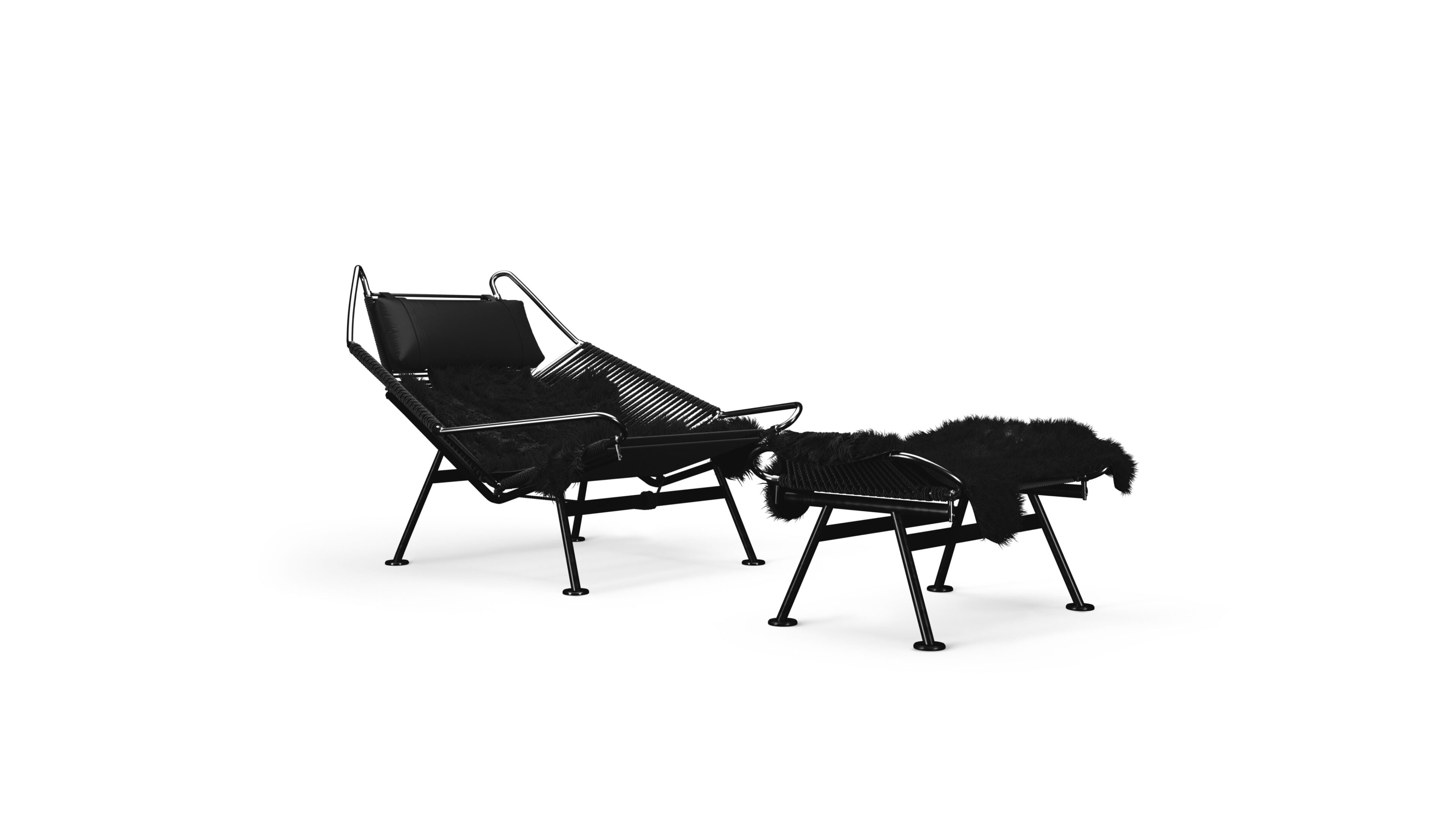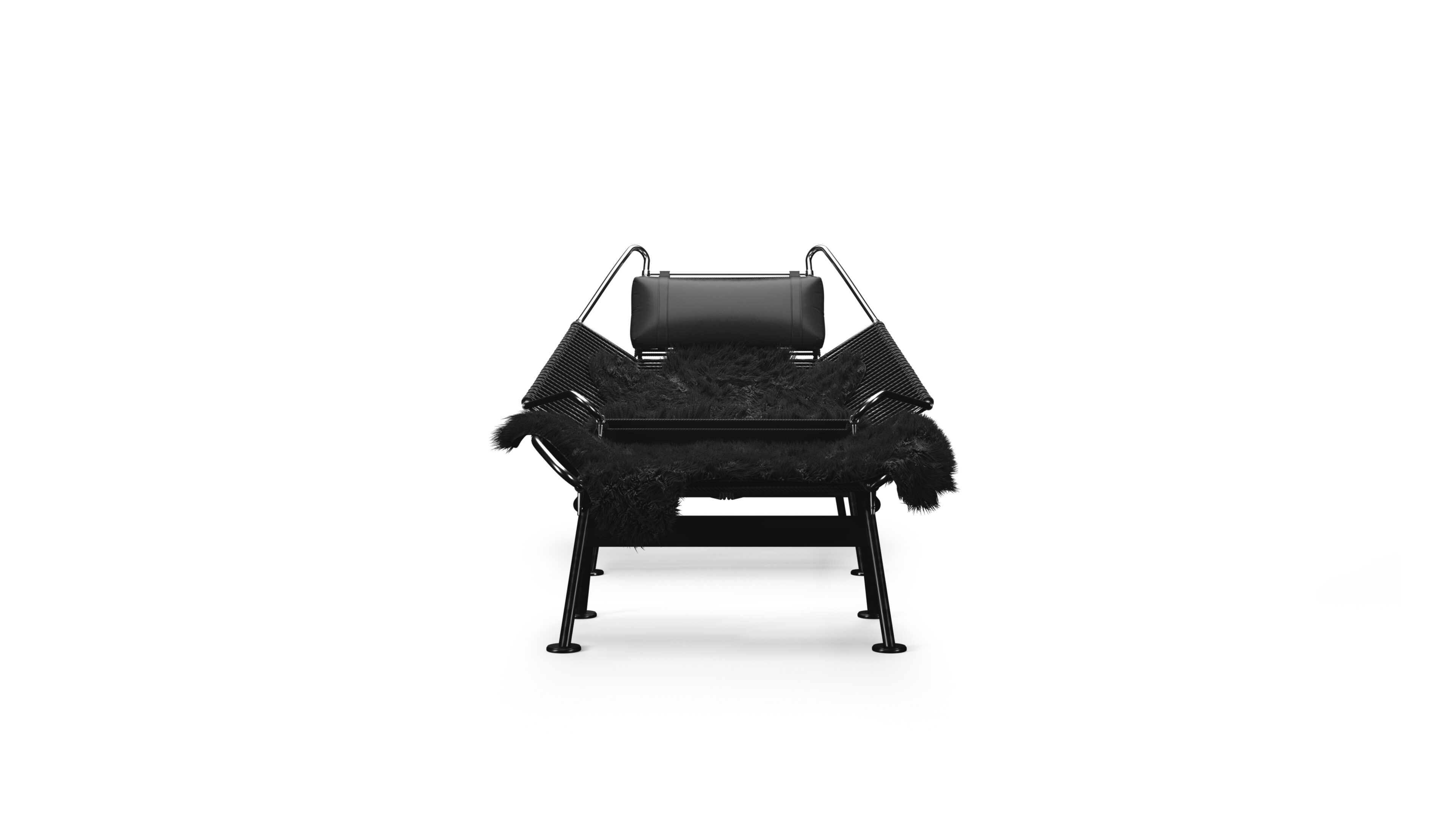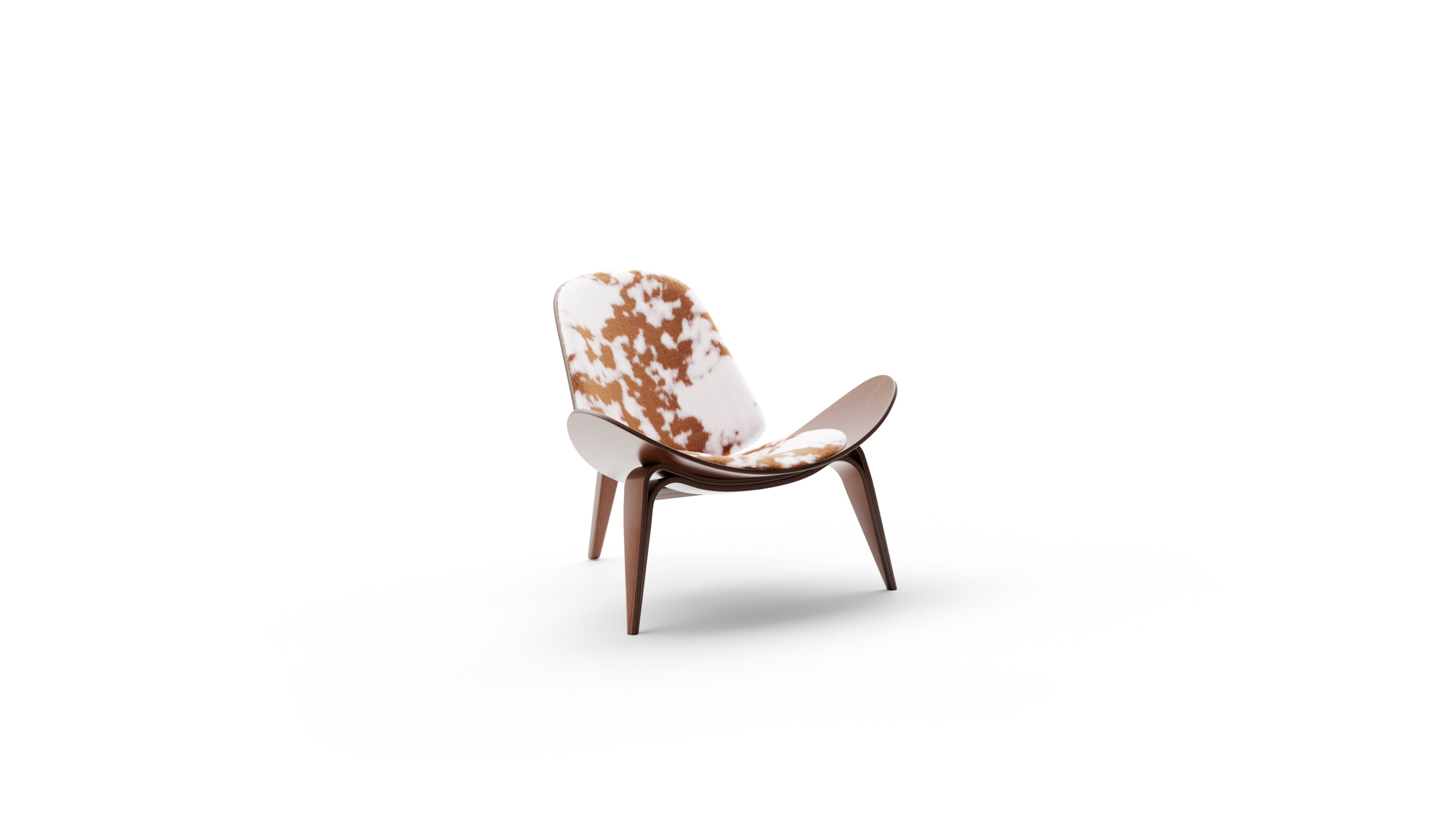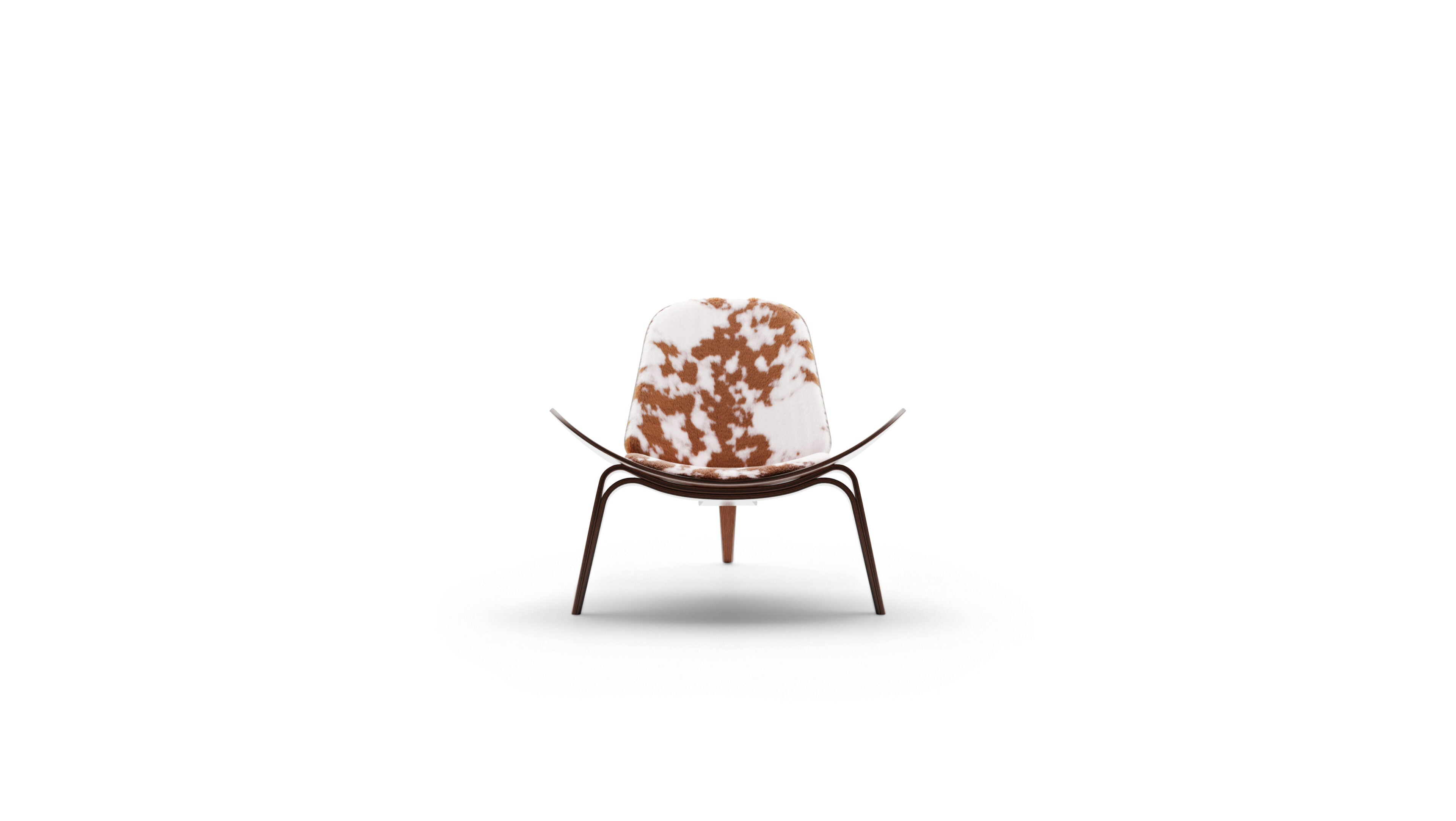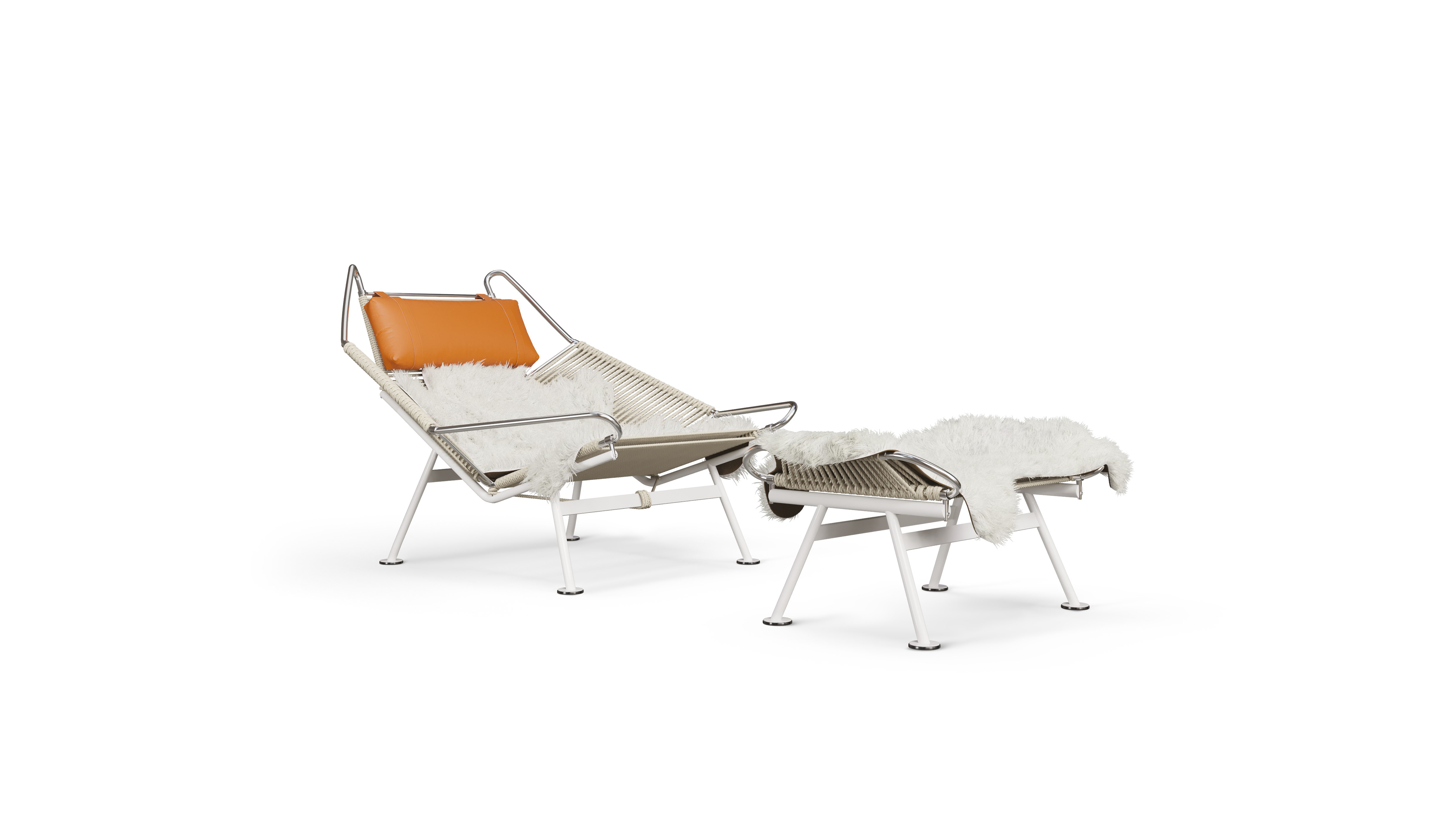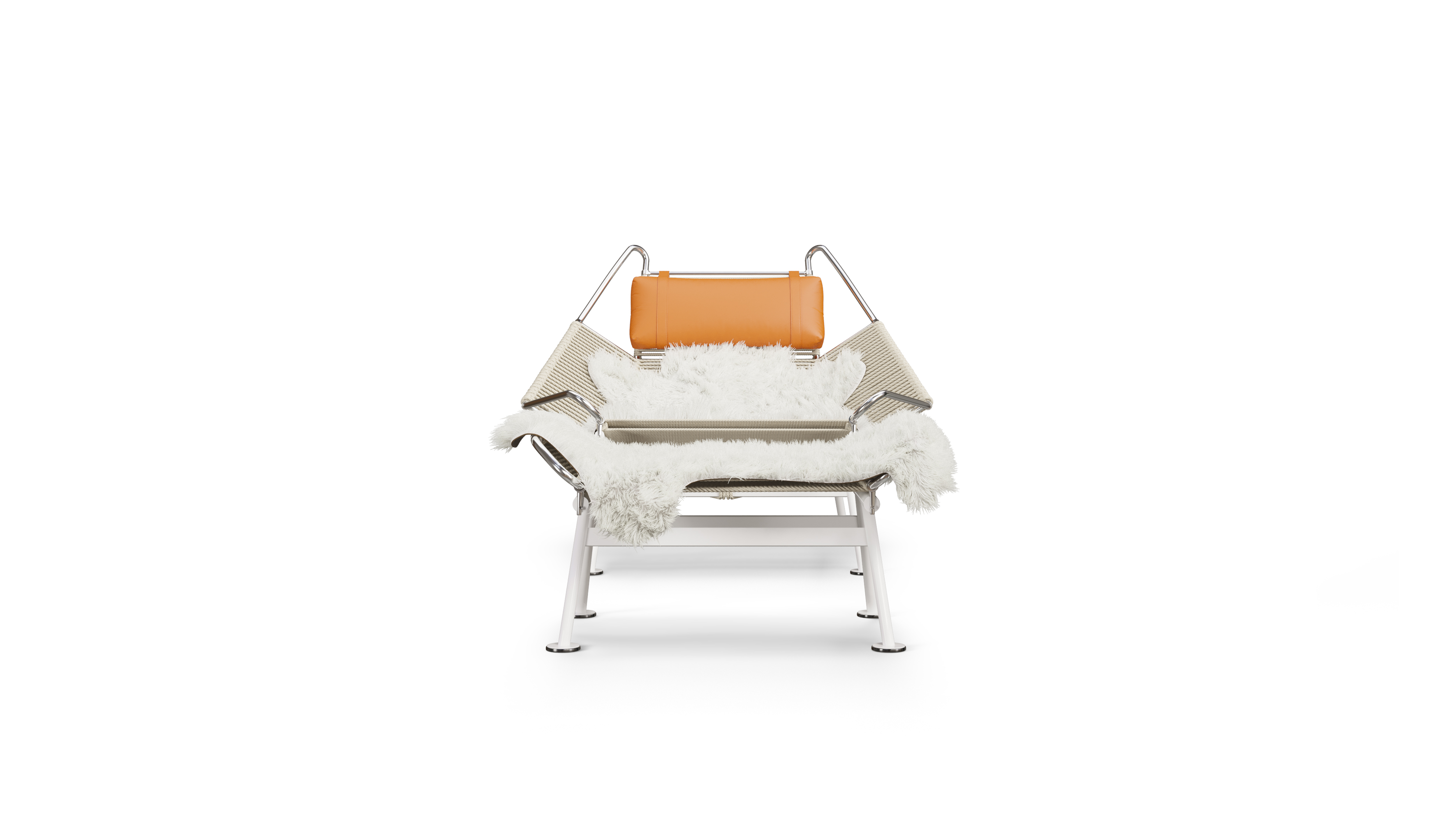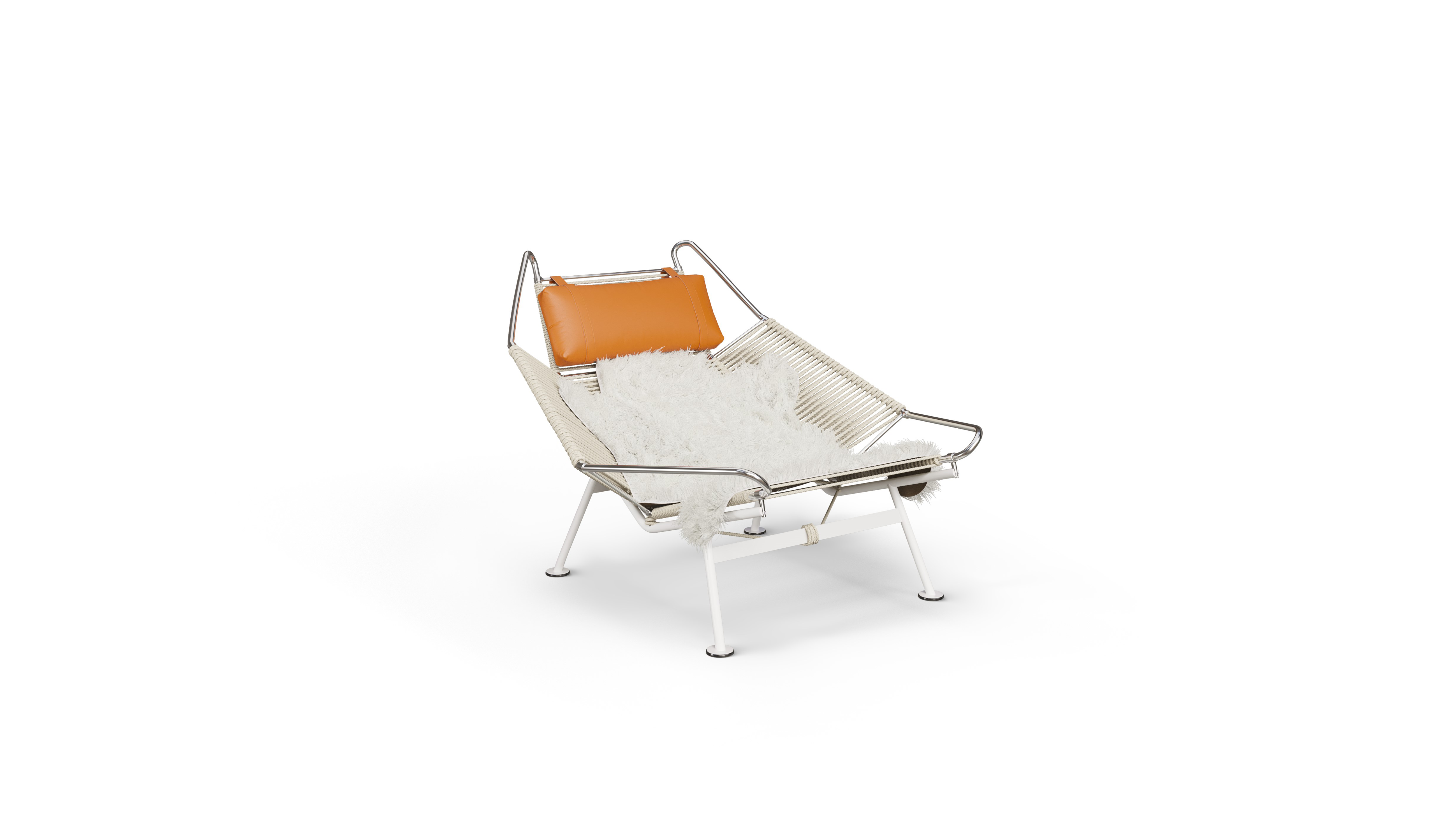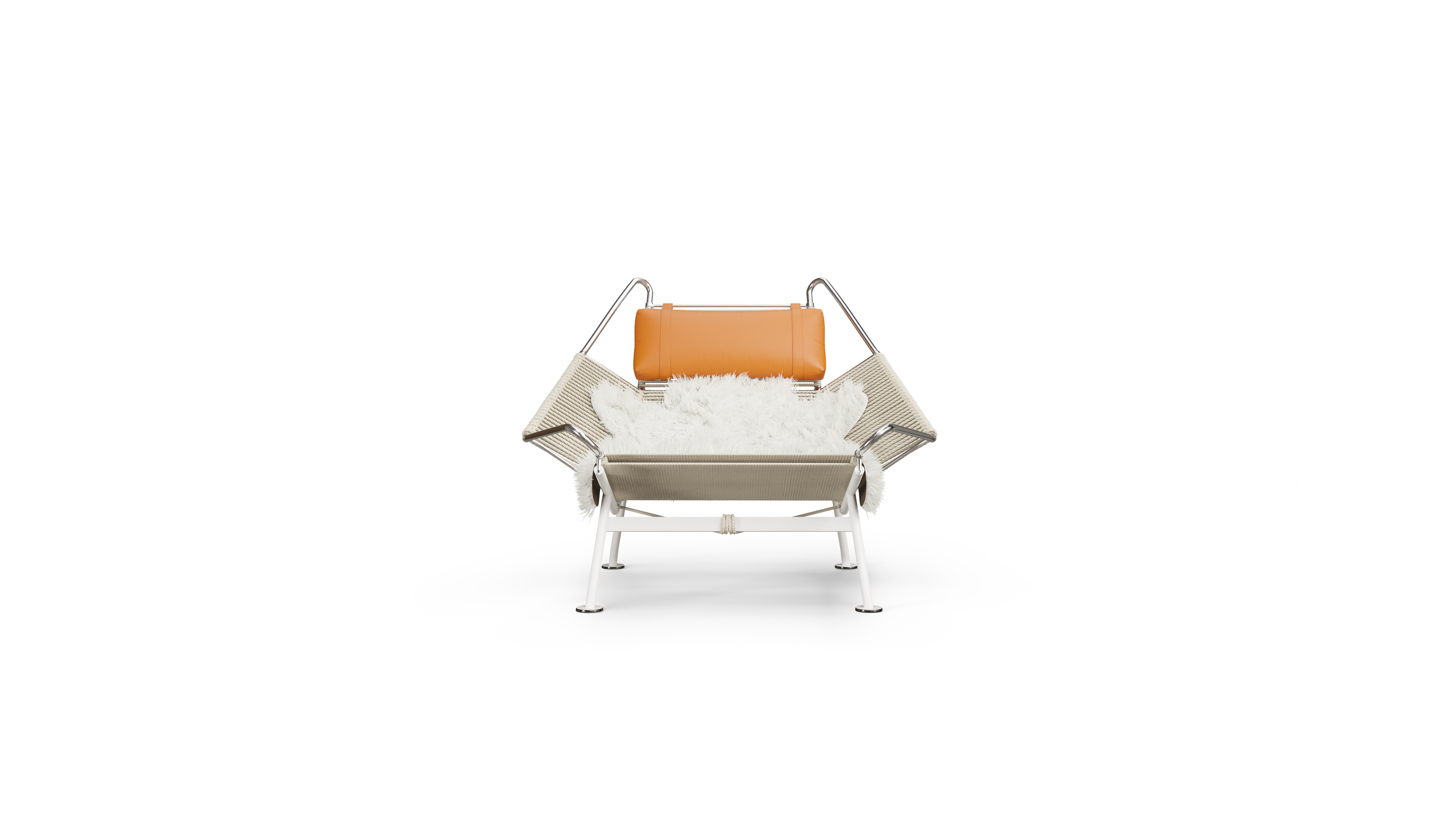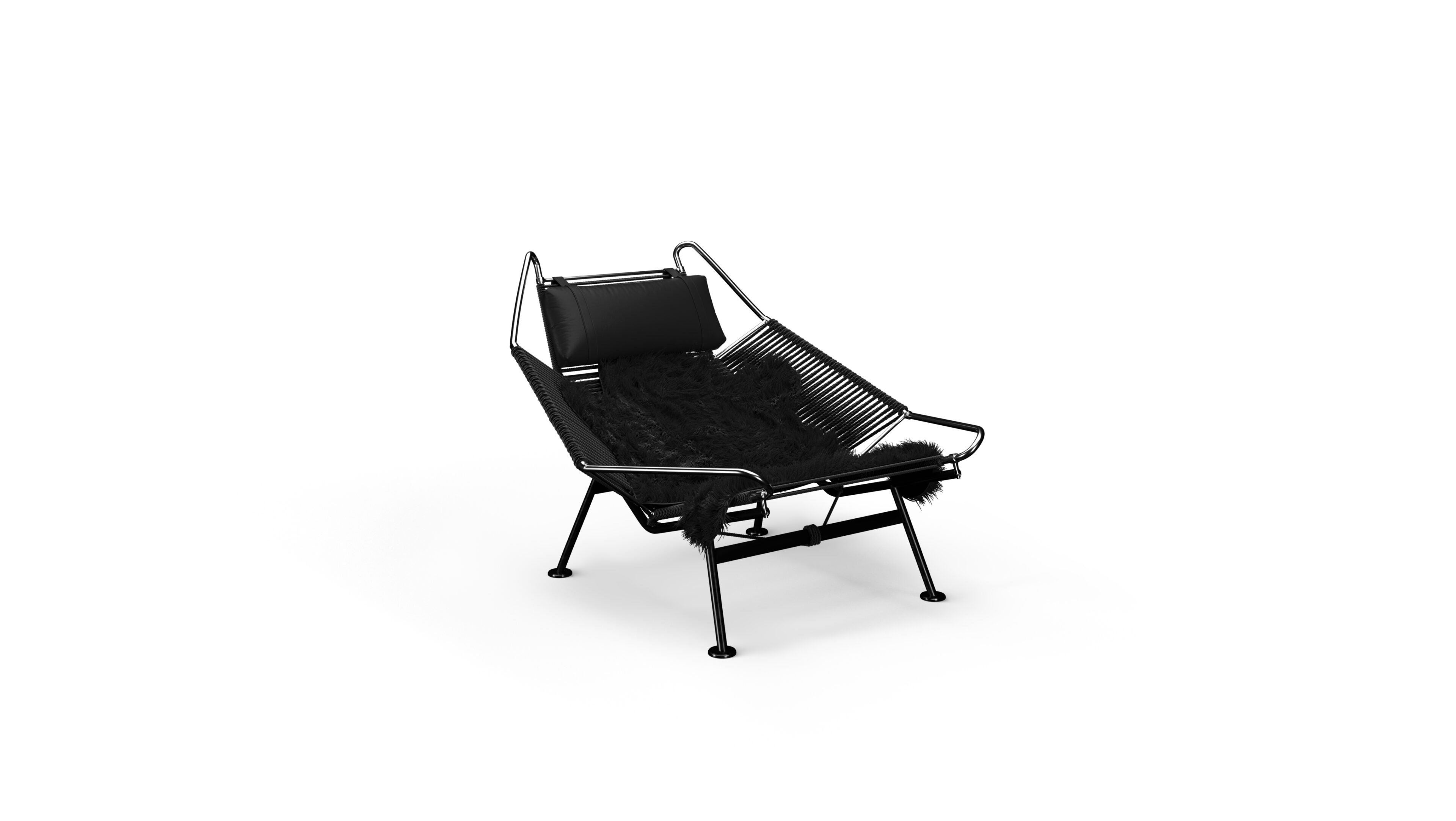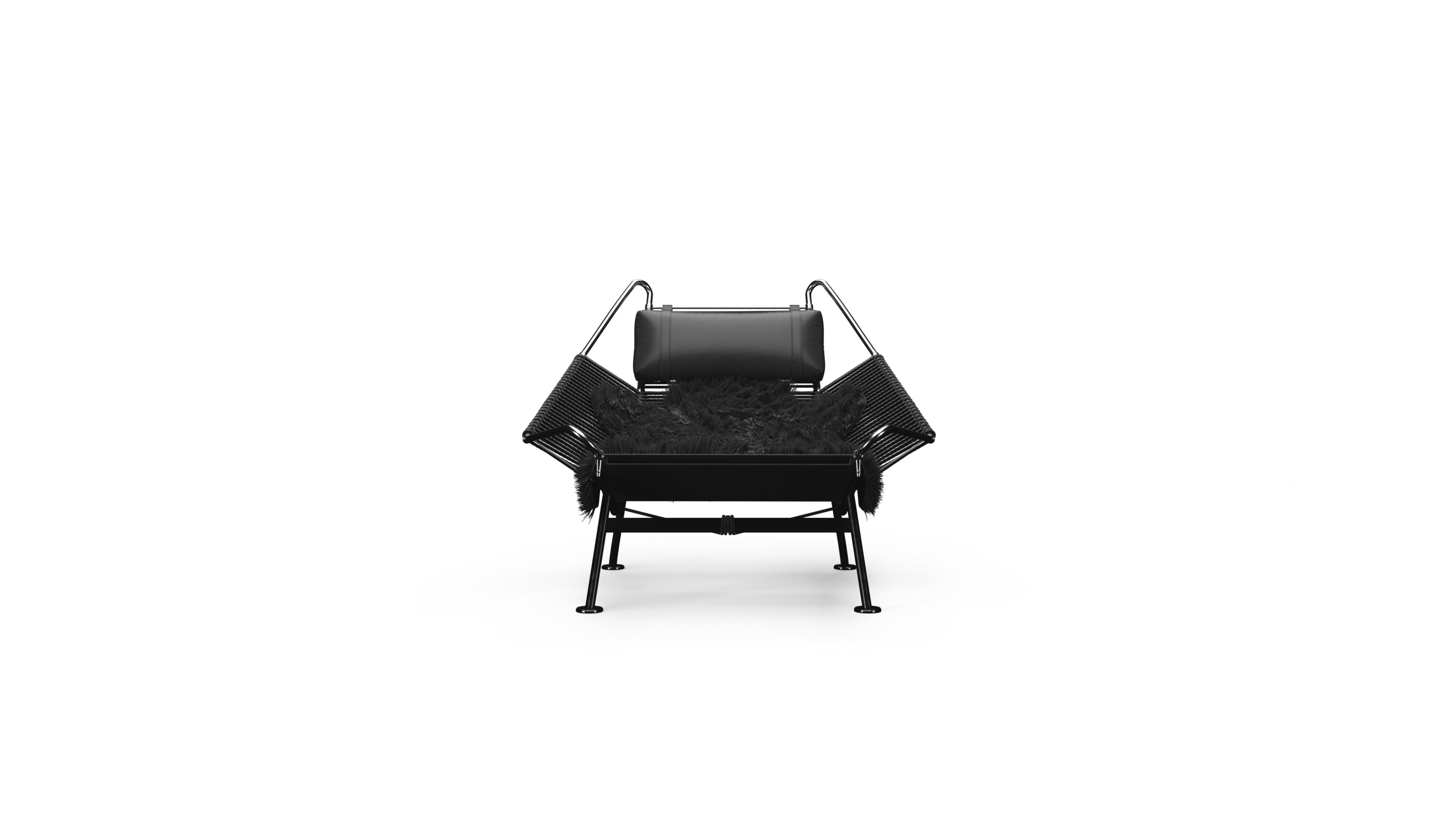
The Enduring Craft of Hans Wegner: Exploring Iconic Furniture Designs Like the Flag Halyard and Papa Bear Chairs
Share
Hans J. Wegner stands among the 20th century's most influential furniture designers, renowned for transforming functional needs into sculptural, human-centered chairs that endure in form and value. Exploring the Hans Wegner Furniture Collection provides direct access to his most celebrated pieces. This article explains Wegner's central design philosophy, traces the origin and construction of the Flag Halyard (PP225) and the Papa Bear (PP19), surveys other canonical Wegner chairs, and gives practical guidance on identification, care, investment, and sustainability. Readers will learn how Wegner's "organic functionality" and "no backside" approach produce durable seating, what materials and craftsmanship traditions make these pieces long-lived, and how to verify authenticity in today's market. The piece also presents technical breakdowns—materials lists, upholstery layer tables, and authenticity checklists—so collectors and design lovers can assess provenance and preservation. Today's reproductions honor Wegner's original vision through advanced manufacturing techniques and premium materials that preserve his design integrity while offering enhanced customization options.
In This Article
Design Philosophy — Organic functionality and the "no backside" principle
Flag Halyard Chair — Nautical-inspired icon with hand-woven rope suspension
Papa Bear Chair — Traditional craftsmanship meets enveloping comfort
Other Notable Chairs — Wishbone, Shell, Wing, Queen, Plank Sofa, and more
Danish Modern Influence — How Wegner shaped mid-century furniture design
Authentication & Care — Identifying quality pieces and proper maintenance
Sustainability — Natural materials and repair-first design philosophy
Archetype Forms — Experience Wegner's vision through quality reproductions
Quick Facts: Hans Wegner Furniture
About the Designer
- Born 1914 in Tønder, Denmark
- Known as the "Master of the Chair" for designing over 500 chairs
- Work held in major museums including MoMA, Victoria and Albert Museum, and Danish Design Museum
- Pioneered "organic functionality" combining human-centered ergonomics with visible craftsmanship
- Collaborated with renowned manufacturers including PP Møbler, Carl Hansen and Søn, and Johannes Hansen during his career
Three Most Iconic Designs
Flag Halyard Chair (PP225) - 1950
- Stainless steel frame with hand-woven flag line seat (240 meters of rope)
- Inspired by nautical rigging and beach culture
- Originally produced by PP Møbler; now available through faithful reproductions
- Combines industrial materials with handcraft
Papa Bear Chair (PP19) - 1951
- High-backed lounge chair with enveloping "wing" design
- Traditional upholstery layers: horsehair, springs, and natural fibers
- First produced by PP Møbler; celebrated for ergonomic comfort
- Exemplifies Wegner's sculptural approach to seating
Wishbone Chair (CH24) - 1949
- Y-shaped backrest with hand-woven paper cord seat
- Originally manufactured by Carl Hansen and Søn
- Over 100 hand-crafted steps in production
- One of Wegner's most commercially successful designs
What Is the Design Philosophy Behind Hans Wegner's Furniture?
Wegner's philosophy centers on "organic functionality," integrating human-centered ergonomics with craftsmanship that honors natural materials and visible joinery, producing chairs that balance aesthetic restraint with sculptural presence. His approach privileges tactile experiences and comfort derived from measured proportions rather than excessive padding or ornamentation, creating pieces that invite sustained use. The guiding principles—human-scaled geometry, structural honesty, and material authenticity—enable Wegner's chairs to function as both practical seating and expressive objects that reveal the skill invested in their making. This philosophy aligns with broader Danish Modern values that celebrate enduring utility and visual warmth.
What Does "Organic Functionality" Mean in Wegner's Work?
Organic functionality describes a design approach where form emerges from practical needs and the body's contours, integrating ergonomic insight with materials and construction methods chosen for tactile warmth and durability. Wegner shaped seating surfaces, backrests, and armrests to support natural postures without imposing rigid frameworks, allowing the chair's structure to respond to human proportions. This philosophy treats chairs as collaborations between designer intent, material capacity, and the seated body, producing furniture that feels intuitive and comfortable through the refinement of proportions. By rooting design decisions in embodied experience, organic functionality yields chairs that maintain relevance across decades.
How Does the "No Backside" Principle Shape His Designs?
The "no backside" principle asserts that every angle of a chair should be visually considered, with joinery, materials, and finishes visible from all perspectives, ensuring that craft quality extends throughout the piece. Wegner avoided concealing structure or economizing on unseen surfaces, creating furniture that could be positioned centrally in a room without compromising visual coherence. This commitment to 360-degree design integrity reflects Danish craft values that celebrate visible labor and skilled joinery, communicating quality through exposed, finished elements. The principle encourages scrutiny and rewards close inspection, traits that support long-term appreciation and collector interest.
How Do His Designs Balance Form, Function, and Comfort?
Wegner balanced form, function, and comfort through iterative testing of proportions and material combinations, refining seat heights, backrest angles, and armrest placements until they supported diverse postures without sacrificing sculptural clarity. He employed hand-woven seats, contoured backrests, and subtle spring systems to distribute weight and adapt to the body, ensuring comfort emerged from structure rather than excessive cushioning. This approach yields chairs that remain comfortable over extended periods while retaining clean profiles, demonstrating that rigorous functional analysis can coexist with aesthetic ambition. The result is furniture that serves everyday needs while expressing refined design intelligence.
What Makes the Flag Halyard Chair (PP225) a Design Icon?
The Flag Halyard Chair (PP225) stands as a design icon through its synthesis of industrial materials—stainless steel and nylon rope—with hand-woven craft, producing a seat that combines visual lightness with structural resilience. Introduced in 1950 and first manufactured by PP Møbler, the design draws inspiration from nautical rigging and beach chairs, translating outdoor leisure forms into a sculptural lounge piece suited for interior use. Its cantilevered steel frame and suspended rope seat demonstrate Wegner's interest in exploring tension and support systems that diverge from traditional upholstered construction. The chair's enduring appeal rests on its ability to merge modernist minimalism with tactile warmth, offering both visual impact and surprising comfort.
What Inspired the Design of the Flag Halyard Chair?
Wegner drew inspiration from maritime culture, particularly the flag halyards (ropes) used on sailing vessels and the relaxed geometry of deck chairs observed along Danish coastlines. This nautical reference informed the chair's use of braided rope as a primary seating surface and its emphasis on tension rather than rigid support, creating a hammock-like experience within a steel frame. By adapting these outdoor, utilitarian elements into a refined interior piece, Wegner explored how industrial materials could support human comfort while maintaining sculptural presence. The design reflects mid-century interest in bridging craft traditions with modern manufacturing capabilities.
What Materials and Construction Techniques Define This Chair?
| Component | Material | Construction Method |
|---|---|---|
| Frame | Stainless steel tubing | Welded, polished finish |
| Seat & Back | Nylon flag line rope (~240 meters) | Hand-woven in continuous pattern |
| Sheepskin Cover | Natural sheepskin (optional) | Draped over rope surface |
The chair employs approximately 240 meters of flag line rope woven by hand around the stainless steel frame, creating a resilient, breathable seating surface that conforms to body contours. Stainless steel provides corrosion resistance and visual clarity, while the rope's elasticity offers comfort without the need for springs or padding. An optional sheepskin cover adds warmth and softness during colder months, demonstrating Wegner's attention to seasonal adaptability. The construction combines industrial welding with traditional weaving techniques, illustrating the designer's commitment to hybrid craft-industrial methods.
How Does the Flag Halyard Chair Combine Industrial and Handcrafted Elements?
The Flag Halyard Chair merges industrial precision—evident in the welded steel frame's clean lines and uniform tubing—with labor-intensive hand-weaving that requires skilled manipulation of rope tension and pattern continuity. This combination respects both mass-production efficiency and artisan craft, producing a piece that feels simultaneously modern and tactile. The chair's form reflects industrial minimalism, yet its tactile surface and construction process preserve human touch, preventing the design from feeling sterile or overly mechanized. This balance became a hallmark of mid-century modernism, where designers sought to humanize industrial materials through craft-based details.
Why Is the Papa Bear Chair (PP19) Celebrated for Comfort and Design?
The Papa Bear Chair (PP19), introduced in 1951 and initially produced by PP Møbler, achieves acclaim by combining enveloping "wing" geometry with traditional upholstery craftsmanship, creating a lounge chair that offers both visual drama and sustained comfort. Its high backrest and curved armrests form a protective enclosure that supports relaxed postures while maintaining sculptural presence, making it suitable for reading, conversation, or quiet repose. The chair's construction employs layered natural materials—springs, horsehair, flax, and linen—that distribute weight and provide resilient cushioning without excessive softness. This blend of ergonomic intelligence and handcrafted detail has secured the Papa Bear's reputation as one of Wegner's most iconic lounge chairs.
What Design Features Contribute to Its Iconic Status?
The Papa Bear's iconic status derives from its generous proportions, sculptural silhouette, and integrated "wing" elements that create a sense of enclosure and refuge. The chair's backrest curves to support the spine while extending upward and outward into protective wings that frame the sitter, offering psychological comfort alongside physical support. Tapered wooden legs provide visual lightness beneath the substantial upholstered body, preventing the design from feeling heavy or static. These features combine to produce a chair that reads as both a functional object and a piece of sculpture, balancing intimacy with architectural presence.
How was the original Papa Bear Chair Constructed?
| Layer | Material | Purpose |
|---|---|---|
| Frame | Solid oak or beech | Structural support |
| Spring System | Steel coil springs, hand-tied | Resilient cushioning base |
| Primary Padding | Horsehair | Durable, breathable cushioning |
| Secondary Padding | Flax fiber, linen batting | Surface smoothing, comfort layer |
| Outer Cover | Fabric or leather | Protective, aesthetic finish |
The chair's construction begins with a hardwood frame, typically oak or beech, which provides structural integrity and forms the foundation for upholstery layers. Hand-tied steel coil springs are secured to the frame, creating a resilient cushioning platform that distributes weight evenly. Above the springs, layers of horsehair, flax fiber, and linen batting build up the seat and backrest contours, each material contributing breathability, durability, and comfort. The final fabric or leather cover is stretched over these layers and finished with precision tailoring to maintain the chair's sculptural lines. This multi-layer approach, rooted in traditional upholstery methods, ensures long-term resilience and allows for future restoration.
What Role Do Natural Materials Like Horsehair and Flax Play?
Natural materials such as horsehair and flax fiber offer breathability, resilience, and environmental advantages over synthetic alternatives, supporting Wegner's commitment to durable, repairable furniture. Horsehair maintains its springiness over decades, resisting compression and providing consistent support without the breakdown common in foam padding. Flax fiber and linen batting add surface softness while allowing air circulation, preventing heat buildup during extended seating. These materials also facilitate restoration, as worn layers can be replaced without compromising the frame or springs, extending the chair's functional life. Their use reflects a design philosophy that prioritizes longevity and sustainability through material choice.
What Other Hans Wegner Chairs Are Highly Sought After?
Beyond the Flag Halyard and Papa Bear, Wegner designed numerous chairs that remain highly sought by collectors and design enthusiasts, each exploring different structural solutions, materials, and domestic contexts. The Wishbone Chair (CH24), Round Chair (PP501 & PP503), Peacock Chair (PP550), Shell Chair (CH07), Wing Chair (CH445), Queen Lounge Chair, Plank Sofa (GE290), CH25 Lounge Chair, and Ox Chair represent a spectrum of approaches—from dining chairs with woven seats to sculptural lounge pieces with bent plywood or upholstered forms. These designs collectively demonstrate Wegner's versatility and his ability to adapt core principles—organic functionality, material honesty, and refined craft—to varied typologies and scales.
How Do These Chairs Differ in Design and Purpose?
The Wishbone emphasizes a continuous, sculpted backrest and hand-woven seat for lightness; the Round chair uses circular back geometry for compact elegance; the Peacock's high back and vertical spindles dramatize presence; the Shell employs bent laminates to create a floating seat; the Wing Chair provides an enclosed, high-backed sanctuary for reading; the Queen Lounge Chair offers generous, sculptural proportions for luxurious comfort; the Plank Sofa extends Wegner's principles to modular seating arrangements; the CH25 demonstrates portable elegance through innovative mechanisms; and the Ox takes on an almost anthropomorphic, robust profile for emphatic lounge seating. Each model trades off sculptural volume, seating depth, and production techniques to address different domestic roles—dining, reading, lounging, or statement placement. Materials vary from paper-cord and steam-bent oak to laminated plywood and leather, illustrating Wegner's mastery across media.
How Do These Chairs Reflect Danish Modern and Scandinavian Design Principles?
These chairs reflect Scandinavian design via restraint, emphasis on natural materials, and a balance between functional clarity and warmth, privileging tactile finishes and human scale over industrial excess. Wegner's chairs demonstrate functionalism through careful ergonomics while celebrating visible joinery and hand-applied surfaces that invite touch. The movement's value on sustainability and repairability appears in choices of renewables—wood, natural fibers, and horsehair—that allow restoration rather than replacement. Thus, each chair embodies broader cultural priorities of modesty, craft, and everyday beauty.
How Are These Chairs Manufactured and Preserved Today?
Contemporary manufacture honors Wegner's original construction methods through faithful reproductions that maintain specified materials, documented proportions, and traditional craftsmanship. Modern reproductions benefit from advanced manufacturing techniques that ensure precision and consistency while preserving the hand-finished details that define authentic Wegner designs. High-quality reproductions use superior materials—premium hardwoods, natural upholstery components, and refined finishes—that often exceed what was available during Wegner's era, while expanded customization options allow buyers to tailor pieces to their specific aesthetic and functional needs. Restoration practices focus on repairing frames, re-springing suspensions, and renewing natural upholstery layers using reversible techniques that maintain structural integrity. For collectors, preservation means using appropriate adhesives, matching wood species for repairs, and engaging professional upholsterers familiar with traditional layering methods. These practices ensure that Wegner chairs remain serviceable and authentic for future generations.
How Has Hans Wegner Influenced the Danish Modern Furniture Movement?
Wegner shaped Danish Modern by demonstrating that rigorous functional design could coexist with expressive craft, setting standards for ergonomic clarity and material honesty that later designers emulated. His chairs became teaching examples in design schools and were repeatedly displayed in exhibitions and museum collections, helping export Scandinavian values internationally. The combination of domestic-scale comfort and refined craft influenced mid-century modern furniture markets by showing that high-quality, human-centered design could find broad commercial and cultural appeal. Wegner's collaborations with manufacturers and guild exhibitions also institutionalized production methods that preserved craft competencies.
What Are the Core Characteristics of Danish Modern Design?
Danish Modern centers on simplicity, functional clarity, natural materials, and superior joinery—values that produce objects meant to age gracefully and be repairable. The aesthetic favors clean profiles, reduced ornament, and surface finishes that highlight grain and tactile warmth rather than paint or heavy lacquer. Functionality is expressed through measured ergonomics and efficient use of materials, producing furniture that fits everyday life without ostentation. These traits create objects that integrate into domestic settings while retaining collectible cultural value.
How Did Wegner's Work Shape Mid-Century Modern and Scandinavian Design Trends?
Wegner's chairs propagated an approach where ergonomics and visible structure became primary design drivers, encouraging other designers to prioritize the human body as a form-giving template. His global recognition—through exhibitions and museum acquisitions—helped define expectations for Scandinavian quality and proportion in international markets. The adoption of his techniques, such as bent laminates and exposed joinery, influenced industrial and artisanal production approaches and contributed to an international appetite for understated, well-made furniture. This diffusion reinforced Danish Modern as a durable design language.
Which Designers and Organizations Collaborated with Wegner?
Throughout his career, Wegner collaborated with cabinetmakers, manufacturers, and guilds including Johannes Hansen, PP Møbler, Carl Hansen and Søn, and A.P. Stolen, aligning design intent with production capability and craft traditions. The Danish Cabinet Makers' Guild and design exhibitions provided venues for prototype testing and public reception, facilitating the refinement of models into production-ready pieces. These partnerships ensured that Wegner's prototypes could be faithfully realized at scale or in licensed runs, supporting both workshop craftsmanship and wider distribution. Understanding these partnerships helps trace the historical lineage of his designs.
How Can You Identify, Care for, and Invest in Authentic Wegner Furniture?
Identifying, caring for, and investing in quality Wegner pieces requires understanding construction details, appropriate conservation practices, and the differences between historical originals and contemporary reproductions that preserve provenance and value. Authentic historical pieces often carry maker marks or documentation tying them to original manufacturers; they exhibit material choices and joinery consistent with Wegner's specifications. High-quality contemporary reproductions maintain these same standards of craftsmanship while utilizing advanced manufacturing techniques and superior materials. Maintenance focuses on preserving structural elements—re-gluing joints, re-springing suspensions, and repairing natural upholstery layers—rather than superficial cosmetic fixes. Investors and collectors consider originality of materials, construction quality, and documented design lineage as primary value drivers, and careful restoration that respects original methods protects long-term value.
What Are the Key Signs of Quality Wegner-Style Chairs?
Key quality indicators include high-grade joinery, material choices matching original specifications such as solid oak or teak frames and natural upholstery layers, and construction details that reflect traditional craftsmanship. Original construction methods—visible tenons, steam-bent curved elements, and proper springing systems—are evidence of faithful manufacture. Quality reproductions maintain these same standards while often incorporating enhanced materials and more extensive customization options than were previously available. Careful visual and tactile inspection reveals the level of craftsmanship invested in each piece.
Quick quality checklist:
Joinery & Materials: Verify solid wood species, visible joinery, and appropriate upholstery systems.
Construction Method: Look for traditional techniques including hand-tied springs and natural padding layers.
Finish Quality: Examine surface treatments and detail work for consistency and refinement.
Customization: Consider whether the piece offers material and finish options suited to your needs.
Why Are Quality Wegner Pieces Considered "Investments for Life"?
Quality Wegner pieces combine material longevity, expert craftsmanship, and timeless design—traits that preserve function while maintaining cultural significance over time. High-quality joinery and repairable natural materials mean the furniture can be conserved rather than discarded, extending useful life and maintaining authenticity. Museum acquisitions and consistent design interest sustain appreciation for Wegner's work, making well-crafted examples attractive to collectors seeking pieces with both utility and cultural value. Because long-term value rests on construction quality and intact craftsmanship, careful maintenance and proper documentation are essential to preserve investment potential.
How Should You Maintain and Preserve Mid-Century Modern Furniture?
Preserve Wegner-style furniture by prioritizing structural integrity: tighten or re-glue joints as needed, have suspensions and springs serviced, and use professional reupholstery with traditional padding materials when restoration is required. Clean wood surfaces with appropriate, pH-neutral products and condition leather sparingly with manufacturer-recommended conditioners to avoid over-softening. Store pieces in stable humidity and temperature conditions to protect adhesives and natural fibers, and consult qualified craftspeople for treatments that could affect structural integrity. Regular maintenance prevents accelerated wear and supports long-term value.
What Should You Know About Contemporary Wegner Reproductions?
Contemporary reproductions of Wegner's designs vary significantly in quality and authenticity to the original vision. The finest reproductions maintain dimensional accuracy, use premium materials that meet or exceed original specifications, and employ traditional construction methods while benefiting from modern manufacturing precision. Quality reproductions often utilize advanced techniques and superior materials—such as refined hardwoods, premium upholstery components, and enhanced finishing processes—that result in pieces of exceptional durability and beauty. Furthermore, contemporary reproductions can offer extensive customization options, allowing buyers to select from a range of woods, finishes, fabrics, and leathers to suit their specific aesthetic and functional requirements. When evaluating reproductions, buyers should assess construction quality, material authenticity, and the manufacturer's commitment to preserving Wegner's design integrity. Price often reflects these differences—superior reproductions command appropriate premiums because they maintain design fidelity and support long-term satisfaction.
What Are the Sustainable and Material Qualities of Wegner's Iconic Chairs?
Wegner's use of natural, repairable materials—solid wood, horsehair, flax, linen, and leather—coupled with joinery that enables repair rather than replacement, creates a sustainability model rooted in durability and slow consumption. By designing chairs meant to be serviced, reupholstered, and conserved, Wegner avoided throwaway aesthetics and aligned with environmental responsibility through product longevity. Natural materials have end-of-life advantages—renewability and biodegradability—that reduce lifecycle impact compared with synthetic alternatives when chairs are properly maintained or recycled. This material strategy underpins the ecological argument for investing in well-crafted, serviceable furniture.
How Do Natural Materials Like Wood, Horsehair, and Flax Fiber Enhance Sustainability?
Natural materials support sustainability by being renewable, repairable, and often biodegradable, which reduces the environmental cost associated with disposal and repeated replacement. Solid timber frames can be disassembled and repaired; horsehair and flax padding can be renewed without replacing structural components; and linen or leather coverings can be reconditioned or recycled depending on local programs. These properties lower lifetime resource turnover compared to disposable, synthetic alternatives, because maintenance and partial renewal extend functional life. Choosing items built from natural, well-documented sources therefore reduces long-term environmental footprint.
How Do Traditional Craftsmanship Methods Support Longevity and Environmental Responsibility?
Traditional craftsmanship—visible joinery, layered upholstery, and hand-fitted components—prioritizes reversible repairs and component replacement, enabling long service lives and reducing material throughput. Hand-applied techniques make it possible to replace padding or re-spring a seat without destroying the frame, preserving embodied energy invested in original timber and joinery. This repair-first mentality reduces waste and supports circularity in furniture lifecycles, aligning with contemporary sustainability goals that prioritize durability and serviceability. For collectors and owners, this means investing in items that can be adapted and maintained rather than discarded.
How Do Modern Reproductions Uphold Sustainable Furniture Practices?
High-quality modern reproductions uphold sustainable practices by maintaining authentic construction methods that prioritize natural materials and handcraft, thus supporting longevity and reduced replacement cycles. By producing faithful reproductions that adhere to traditional construction methods and material choices, manufacturers preserve an ecological approach that favors repairability and durable design. Advanced manufacturing techniques, when combined with traditional craftsmanship, can actually enhance sustainability by improving precision and reducing material waste during production. Contemporary reproductions that use premium, sustainably sourced materials ensure that purchasers receive products that can be serviced and conserved using time-tested techniques. This continuity links design heritage to present-day sustainability practice, offering furniture that serves multiple generations.
Experience Wegner's Vision Through Archetype Forms
At Archetype Forms, we honor the legacy of Hans Wegner and other visionary designers of the 19th and 20th centuries through faithful reproductions that preserve their artistic vision while incorporating contemporary advancements. Based in Vancouver, BC, Canada, we specialize in creating high-quality reproductions that remain sincere to original designs while utilizing superior materials and more advanced manufacturing techniques than were available during Wegner's era. Our approach respects the designer's intent while offering modern enhancements that improve durability, precision, and customization possibilities.
What Sets Archetype Forms Apart?
Our commitment to quality manifests in every aspect of production. We craft each piece to original specifications using the latest technological advancements, ensuring dimensional accuracy and structural integrity while preserving the hand-finished details that define authentic Wegner designs. Our reproductions often surpass historical pieces in material quality, utilizing premium-grade hardwoods, refined upholstery components, and advanced finishing processes that enhance both beauty and longevity. This fusion of traditional craftsmanship with contemporary precision results in furniture that honors design heritage while meeting modern expectations for quality and performance.
Why Choose Reproductions from Archetype Forms?
We offer extensive customization options that were simply not available during Wegner's time. Customers can select from a diverse range of premium materials—including various hardwood species, luxury fabrics, fine leathers and suedes, and refined finishes for wood, metals, and other materials. This flexibility allows you to tailor iconic designs to your specific aesthetic preferences and functional requirements without compromising design integrity. Our faster lead times, competitive pricing, and 5-year limited warranty demonstrate our confidence in our craftsmanship and our commitment to customer satisfaction. By choosing Archetype Forms, you invest in furniture that combines timeless design with modern quality standards, creating pieces that will serve and delight for generations.
Our Philosophy: Preserving Design Heritage
We believe that great design transcends time, and that the archetypal furniture pieces of the modern era deserve to be accessible to contemporary audiences. Our reproductions pay homage to icons like Hans Wegner by preserving their design principles—organic functionality, material honesty, and superior craftsmanship—while incorporating the benefits of modern manufacturing. This approach ensures that Wegner's vision continues to enrich homes and spaces worldwide, maintaining relevance and beauty for future generations. When you choose an Archetype Forms reproduction, you're not simply purchasing furniture; you're investing in a piece of design history, reimagined for today.
Explore our Hans Wegner Furniture Collection to discover how we bring these iconic designs to life with exceptional quality and customization options. Contact us today to help you build your dream space.
Hans Wegner FAQ
Who Is Hans J. Wegner?
Hans J. Wegner (1914–2007) was a Danish furniture designer known for creating more than 500 chair designs and shaping the foundation of Danish Modern furniture. He trained as a cabinetmaker before studying at the Danish School of Arts and Crafts in Copenhagen. Wegner’s work emphasized visible craftsmanship, organic proportions, and functional clarity. His chairs—including the Wishbone (CH24), Round Chair, and Papa Bear (PP19)—helped define Scandinavian design worldwide and are held in major museum collections including MoMA and the V&A.
How to Pronounce Hans Wegner
Hans Wegner is pronounced “Hahns VEG-ner.” The “W” in Wegner follows the Germanic pronunciation and sounds like a soft “V.”
How to Identify Hans Wegner Furniture
Authentic Wegner furniture is identified by construction quality and joinery rather than surface labels. Look for precise mortise-and-tenon joints, seamless transitions between components, hand-finished wood surfaces, and natural materials such as oak, teak, or beech. Many original pieces include branded marks from licensed manufacturers like Carl Hansen & Søn, PP Møbler, or Johannes Hansen, typically stamped or burned into the frame. The proportions—elegant but functional—and exposed structure are consistent identifiers across models.
How to Identify a Hans J. Wegner Chair
Wegner chairs display distinct features: sculpted backrests that follow natural posture, visible joinery, and refined balance between seat, frame, and leg thickness. The underside often reveals consistent craftsmanship and serial numbering or maker stamps. The best reproductions maintain these structural characteristics and materials while offering more upholstery or finish options.
Who Designed the Wishbone Chair?
The Wishbone Chair (CH24) was designed by Hans J. Wegner in 1949 for Carl Hansen & Søn. It features a Y-shaped backrest, steam-bent top rail, and hand-woven paper cord seat. Over 100 manual production steps are required for each chair, and it remains one of the most recognized pieces of Danish Modern design.
Is the Flag Halyard Chair Comfortable?
Yes. Despite its industrial steel frame, the Flag Halyard Chair offers deep, flexible comfort due to its hand-woven flag-line seat that conforms to body shape. The optional sheepskin cover adds warmth and softness, making it a functional and visually striking lounge piece.
What Is Danish Design?
Danish design emphasizes functional clarity, craftsmanship, and honest materials. The movement focuses on human comfort and simple geometry without ornamentation. Furniture, lighting, and architecture within this tradition favor natural woods, textiles, and leather finishes, producing objects that are both practical and enduring. Hans Wegner was a central figure in shaping this philosophy.







